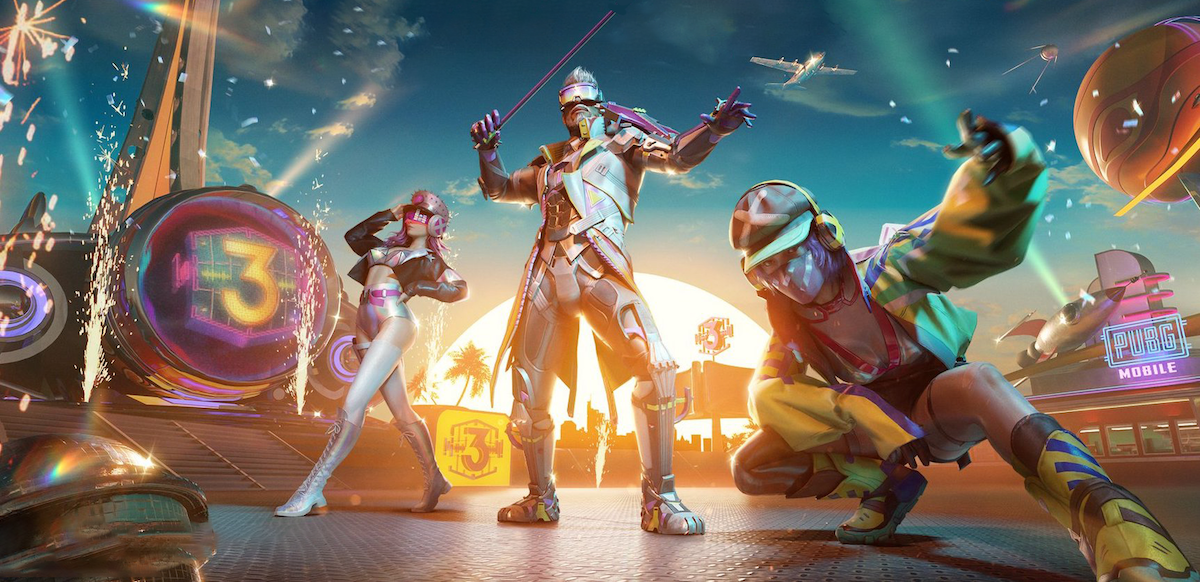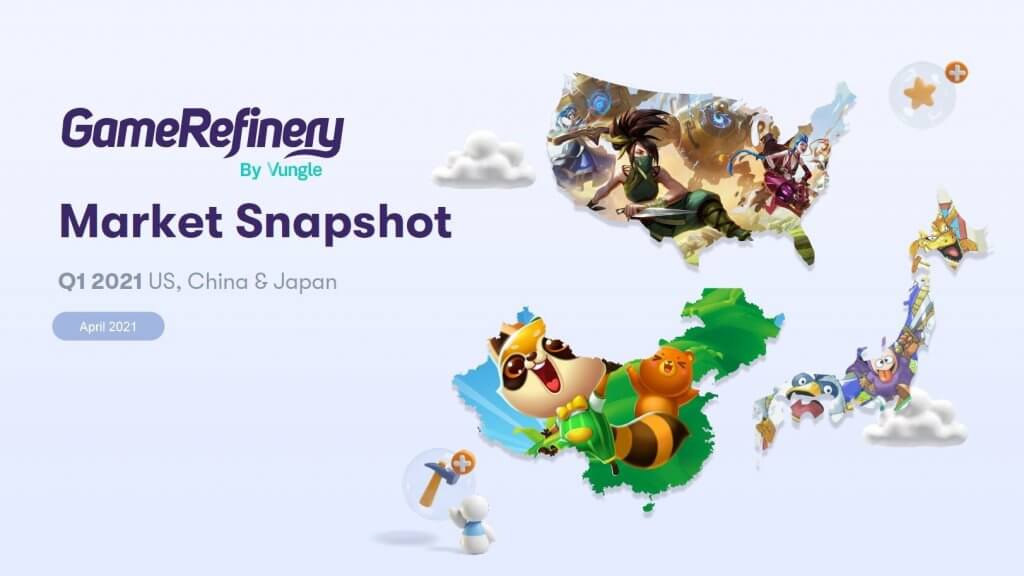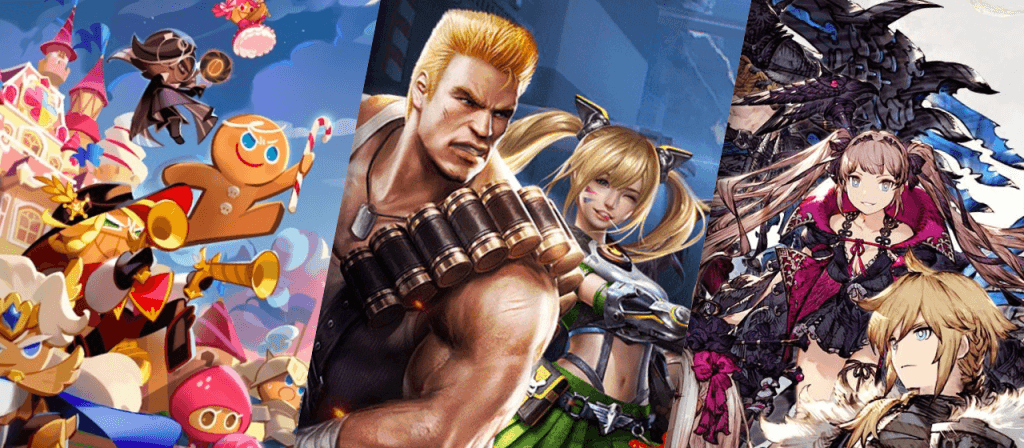Battle Passes have been around the game industry for a while now. It was truly popularized by Battle Royale games and, foremost, Fortnite. For a while, it was a feature used to monetize mainly cosmetic economies of the competitive shooter games. But things are quite different nowadays. Battle Passes are all around the market in all kinds of genres ranging from shooters, RPGs, Casino to Match3s.
In this post, we’ll go over the recent market data on Battle Pass and look at PUBG Mobile’s innovative takes on the feature.
Battle Pass high-level market data
The beautiful thing about the Battle Pass feature is that it has really “many faces.” First and foremost, I see it as an engagement/progression feature. It gives players another progression layer and engages players for the duration of the season. One of the main reasons it especially fits the games with cosmetic economies is that there is often no power progression and minimal progression layers between matches outside Battle Pass. You get the feeling of getting constant progression which is a strong motivational driver.
Secondly, of course, it is a monetization feature. Often Battle Pass offers exceptionally good value with a relatively low price point as you have to “work for your rewards” to unlock them compared, for example, to a direct IAP bundle. It is often targeted to be a highly converting feature for low spenders/non-payers. It is also much more appealing psychologically for many players. You can see the rewards that you’ve already “halfway unlocked,” which induces much stronger FOMO compared to missing a limited-time IAP bundle sale. Highly recommend checking out this insightful video from Supercell and their design process/results for implementing a Battle Pass.
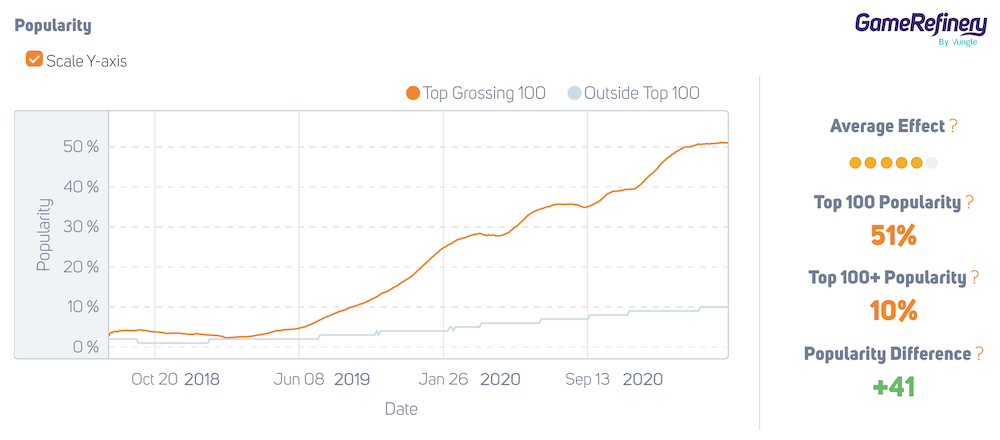
As we can see from the graph above, the popularity of the feature in the top games really started growing back in the summer of 2019. And ever since, it has been picked up by more and more games, and nowadays, OVER HALF of the top 100 games have it, no matter what’s the genre.
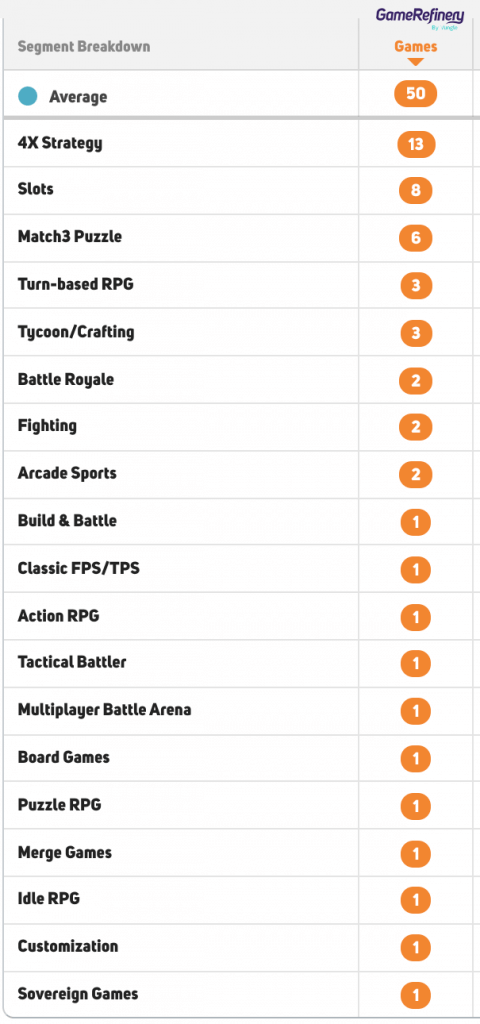
How about pricing, then? Naturally, the price point (and the whole implementation) depends/varies a lot based on each game and their economies, but let’s look at some average data from the market.
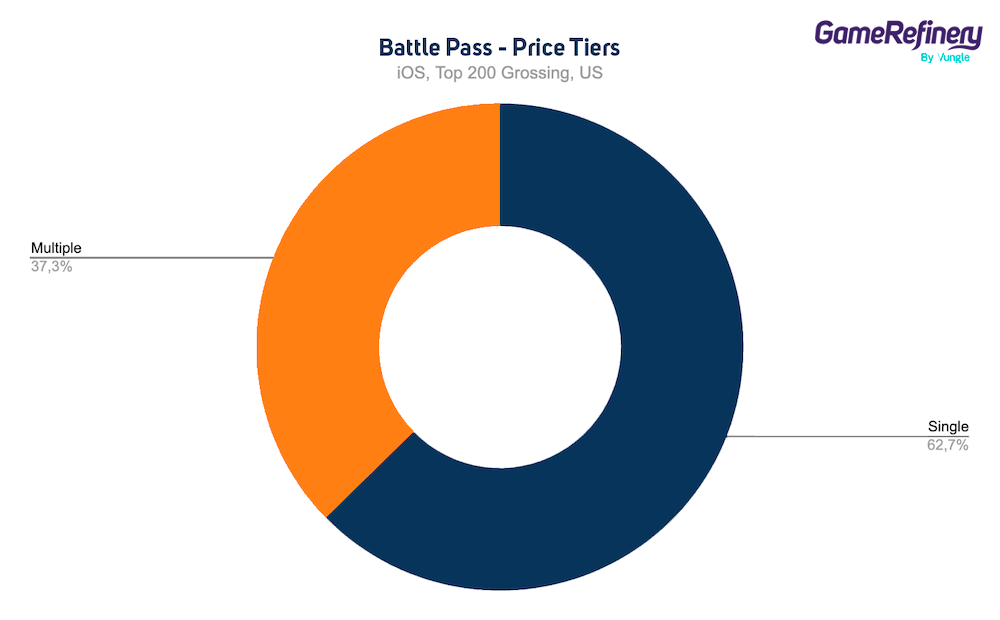
Most of the Battle Passes have just a single price point, but plenty of games offer two or more price tiers (often, a higher price point purchase offers you instant progression to a certain tier in the BP).
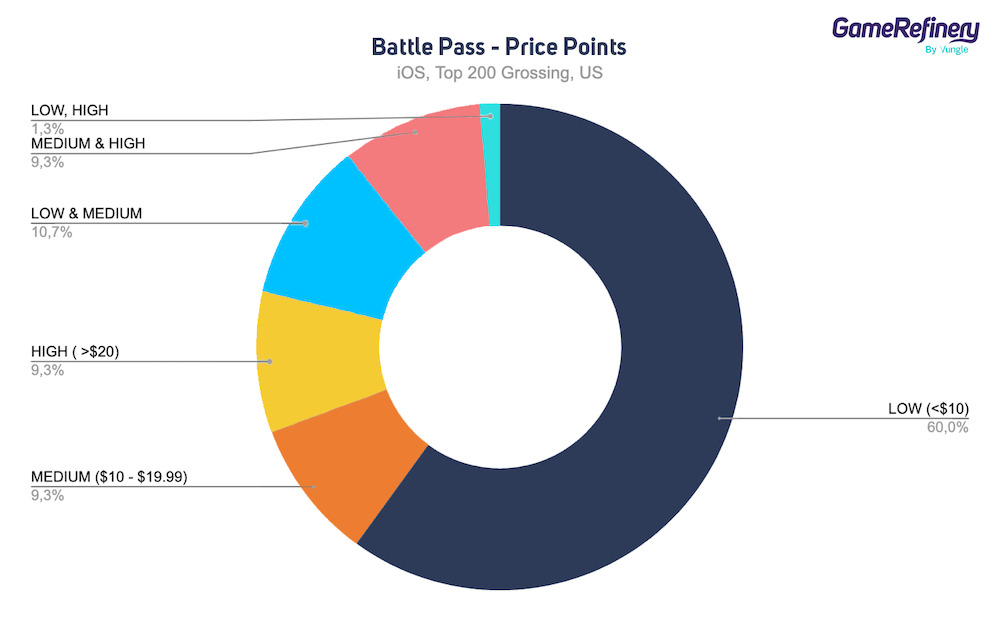
As we can see from the price point analysis above, over 70% of top-grossing games offer their Battle Passes with at least one lower than a 10-dollar price point which ties back to the fact that this feature is often very appealing to low spenders/non-payers.
For more market-level data, log in to GameRefinery SaaS service or contact us!
But that’s enough about the market averages. Let’s dive deeper into the beef of this blog post, the interesting Battle Pass innovations in PUBG Mobile.
PUBG Mobile – Royale Pass
If we look at the Battle Pass implementations in the mobile game market, PUBG must have one of the most robust ones nowadays.
In the early days of PUBG Mobile, Battle Pass was implemented with your usual simple format, but it has changed quite radically over the years. In the center of it all is still the basic reward layers (free + paid) + purchasable tiers for faster progression and the main source of the progression comes from the daily / weekly missions you need to complete. But this is nothing super special and often the basis of most Battle Passes, so let’s dig a bit deeper into the bigger peculiarities which make PUBG’s implementation quite unique.
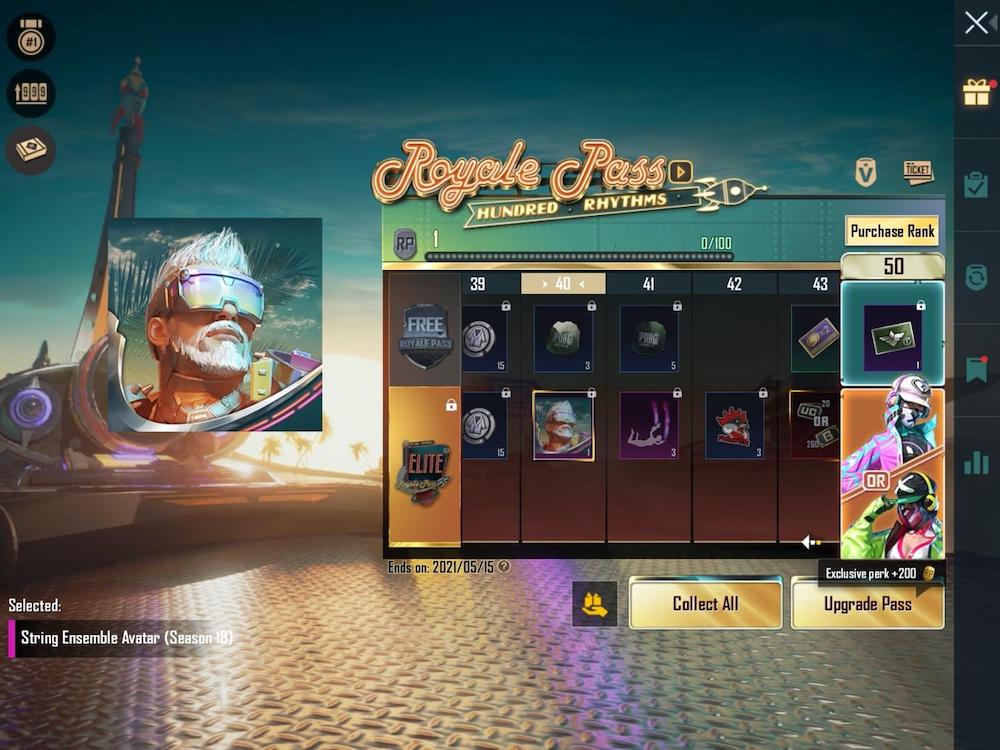
Season Match Time
One of the latest additions for the BP. When you spend time in the matches for the duration of the season, you earn battle pass progression points (RP) for every 100 mins spent in-game. It’s another way to accumulate progression on top of the basic daily/weekly task system.
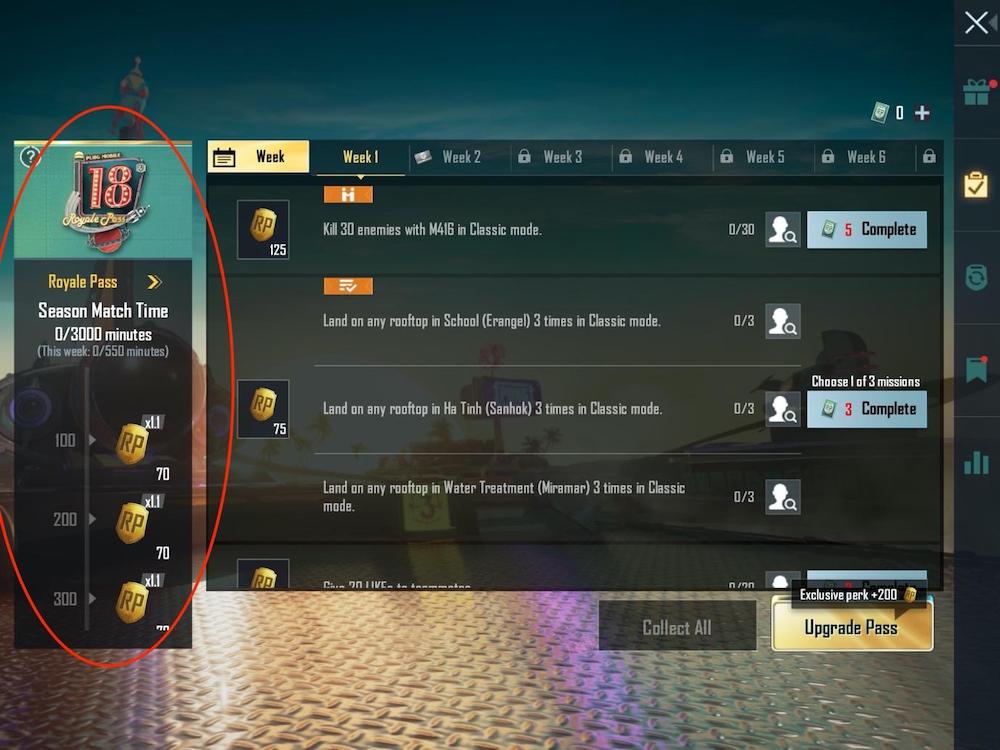
RP EZ Mission License
It is an extra purchase on top of your premium battle pass purchase. It unlocks weekly missions for you faster, earns you Mission Cards (used to auto-complete tasks) every week, you get more RP (battle pass progression points) from Season Match Time rewards.
But the genuinely interesting part comes from the price point. It varies based on how many consecutive seasons of the BP you’ve purchased. If you have purchased more than 3 consecutive BPs, you get the EZ Mission License for free. So, its primary function is to drive the constant consecutive BP purchases and keep players’ “purchase streak going.”
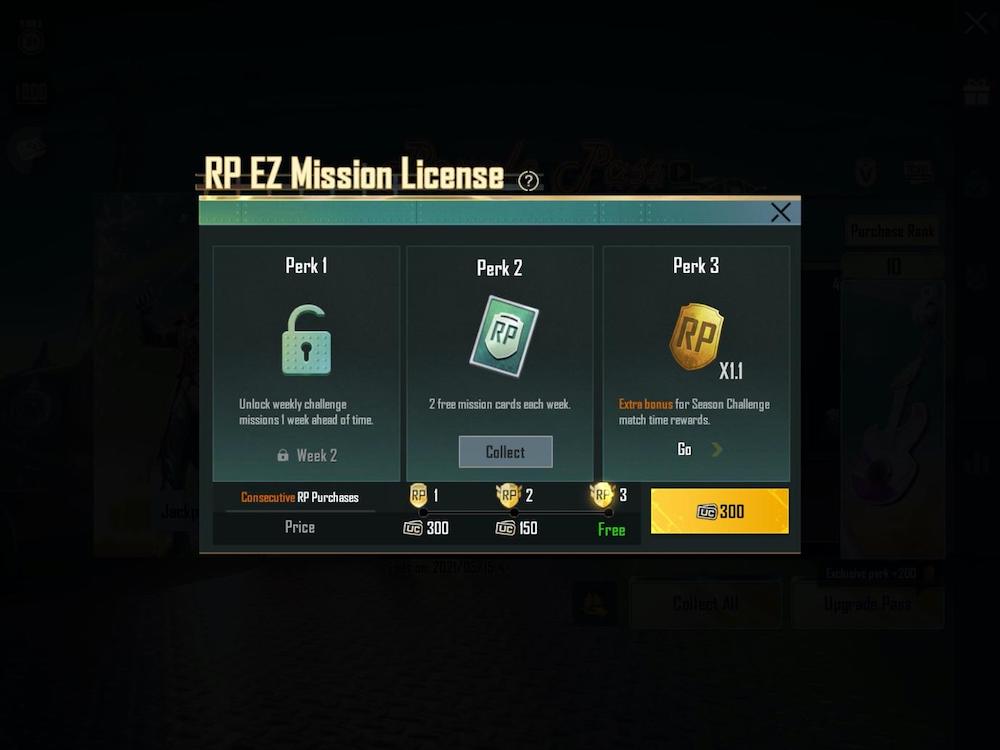
RP Activity Packs
This is a pretty recent addition to the Battle Pass as well. It is also an extra purchase that players can make. It includes vouchers for some gachas + 20 tiers ranks for Battle Pass, BUT the fascinating twist comes in the form of “Mission Activity Point Rebates.” When players purchase the RP Activity Pack, they get the benefits mentioned above, but they also activate the rebate to get the used premium currency possibly back! So, when the rebate is active, all the progression points (RP) earned from the Battle Pass quests also convert into points for the rebate. When the certain point threshold is reached, players get the used premium currency back.
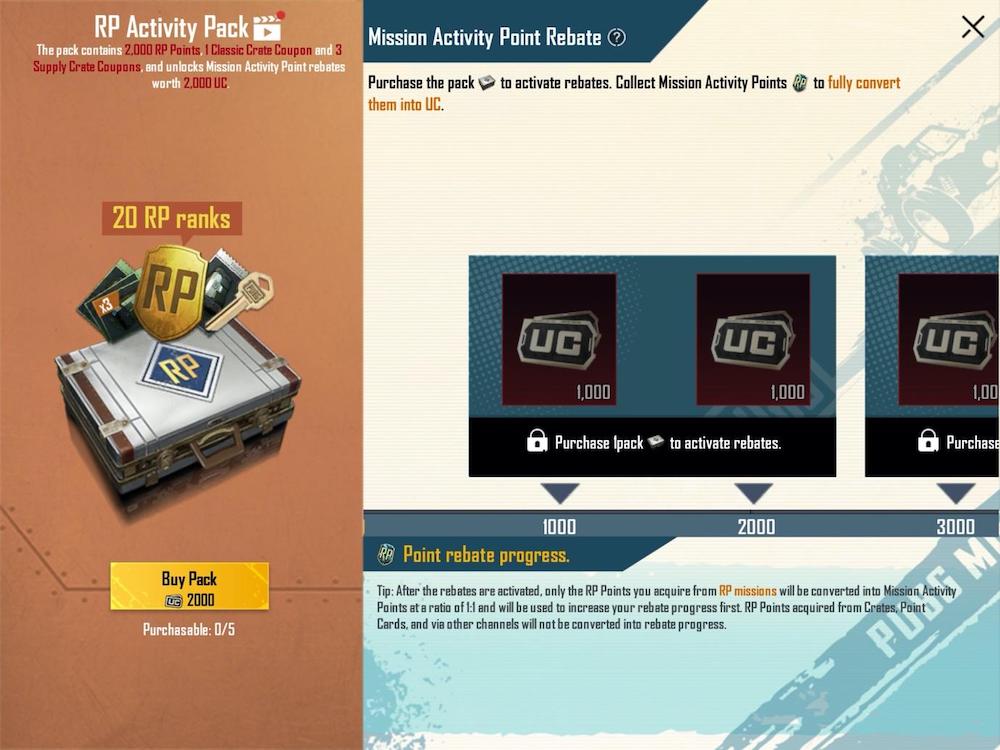
Let’s use an example to try to make it a little bit clearer. Player purchases 1 RP Activity Pack. They get 2000 RP points (equals 20 levels in Battle Pass) + some gacha coupons, AND they unlock Mission Activity Point rebate for 2000 points. Now, after this, when they complete, for example, a weekly task after which rewards, e.g., 125 RP, they also get 125 Activity Points. Now to get the first 1000 premium currency back, they need to reach 1000 Activity Points and so on.
This feature incentivizes players to get “free progression” for Battle Pass, but naturally, you need to buy the required amount of the premium currency with real money to get the pack first. So even though you might get your invested premium currency back, you have already made a real-money purchase that you can’t get back. You can use the premium currency elsewhere in the game and get the extra value that way, but you’ve already invested heavily with real money into the game.
RP Point Store
As you can see from the aforementioned features, there’s plenty of ways to make progression in the Battle Pass quicker and faster. This naturally means that this needs to be taken into account when balancing the BP. This is one reason why the Battle Pass progression points (RP) don’t just progress your Battle Pass, but it is used as a separate currency to do various things.
One of these things is the RP Point Store. It is a store that uses RP Points as currency to buy various things such as cosmetic gacha crates, upgrade materials for upgradeable skins, AND RP Badges (currency for the Royale Adventure. Read more about it in the next chapter).
So even if there are players that spend quite a bit and complete the “basic BP reward layer” quickly, there’s still constant value in completing BP quests and getting RP.
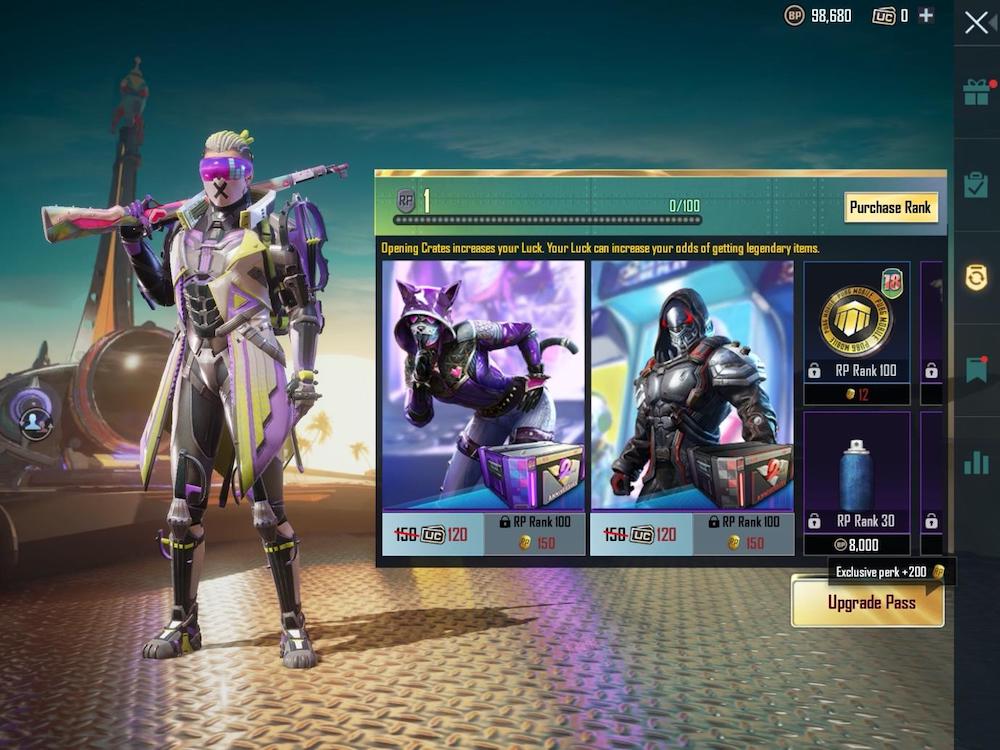
Royale Adventure
This is a bit more complicated addition for the Battle Pass ecosystem. Players use RP Badges (earned from BP pass level rewards, aforementioned RP Point Store, or with direct premium currency purchases) to start an adventure.
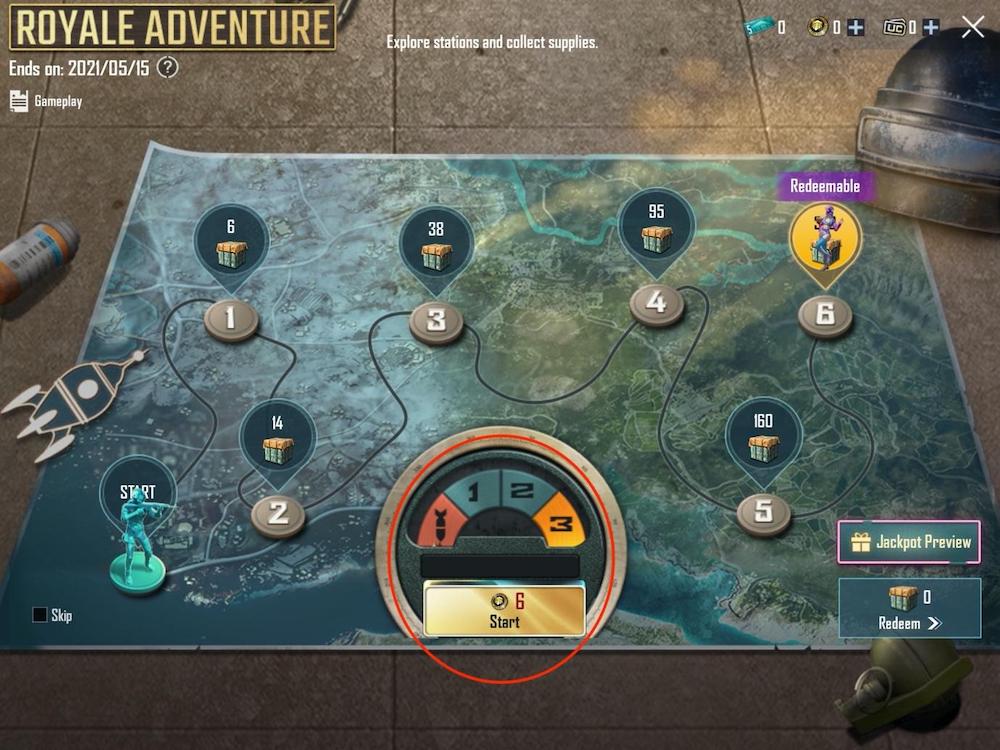
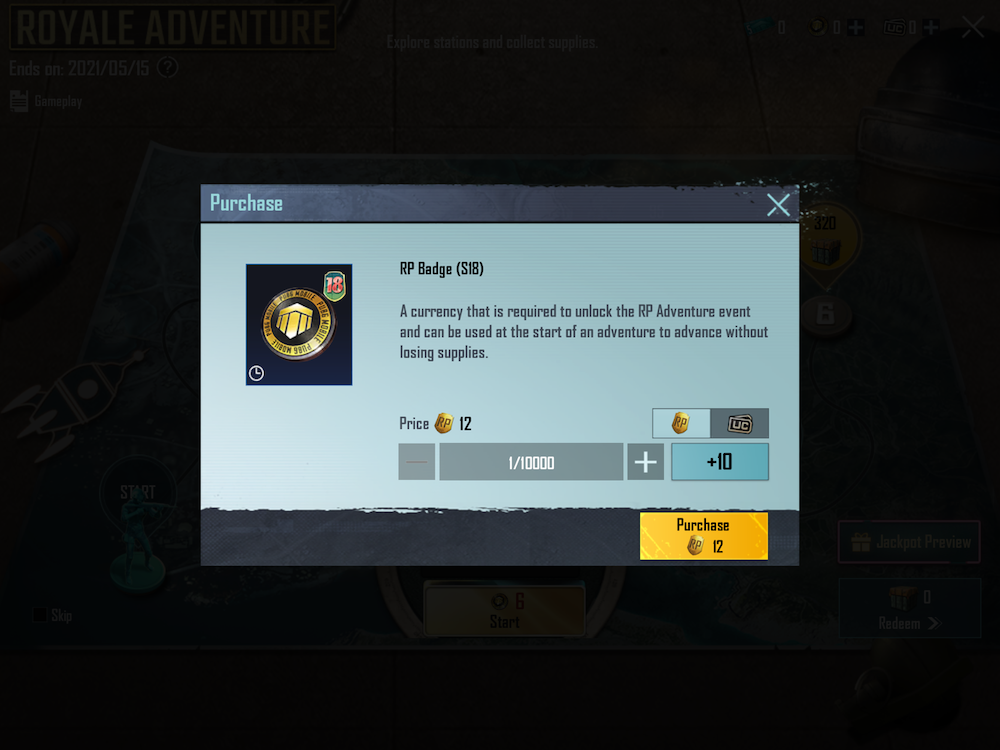
You roll “the slot” to see how many steps you’ll proceed in the adventure. If you get 1, you’ll move into the 1st spot on the map, with 2 to the 2nd one, and so on. The trick comes from the following steps. If you want, you can “bank” the supplies you earned from the first roll, OR you can choose to try to move forward towards the higher rewards.
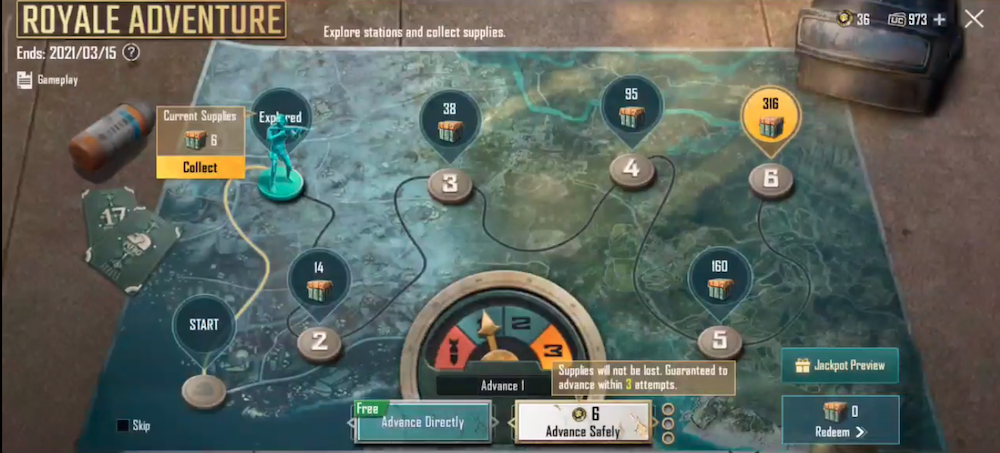
You can choose to move forward for free, BUT there is a risk that your roll hits the bomb and you lose the already accumulated supplies from that try. Or you can use RP Badges to advance safely, and you’re guaranteed to advance within a certain number of attempts (so, in this case, it wouldn’t matter if you hit bombs, you won’t lose the supplies).
There’s constantly this risk/reward balance act going on: do you want to progress further to get higher rewards OR do you want to play it safe and bank your accumulated rewards OR do you want to spend more to get more rewards with no risk.
But what are those earned supplies then used for? They have their own store where you can buy various skins, accessories, gacha crates, and so on.
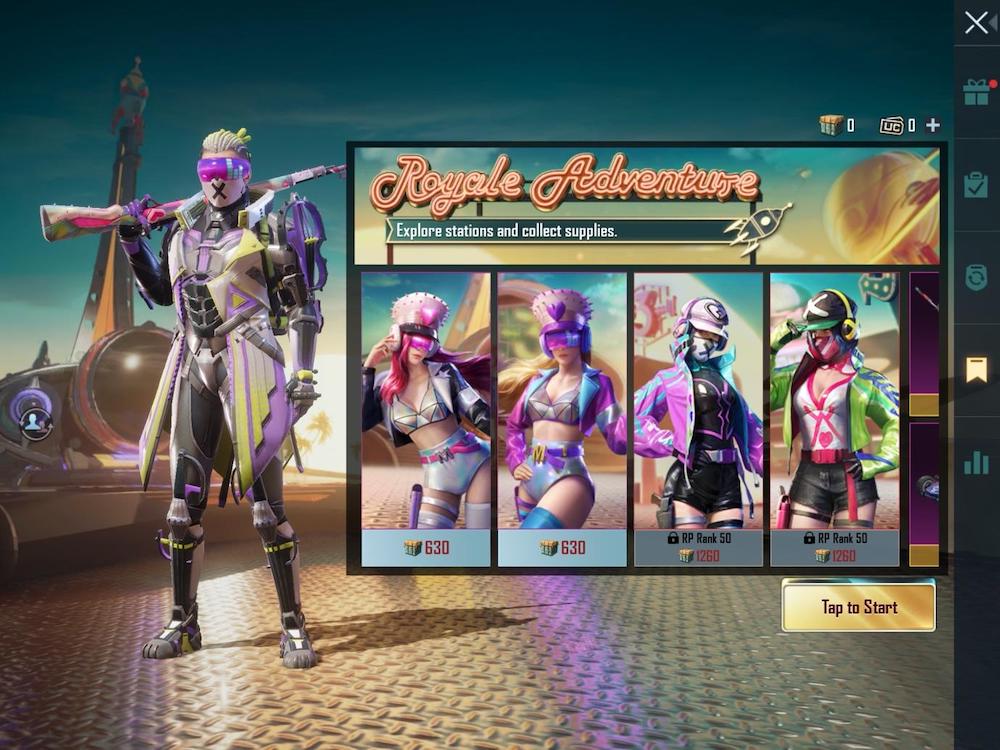
So, Royale Adventure brings yet another way to spend either premium currency or the RP you earn from the progression of the Battle Pass.
RP Team
Battle Passes traditionally are very personal. You grind your own quests and reach rewards thresholds alone. But PUBG innovates in this aspect as well with the RP Team feature.
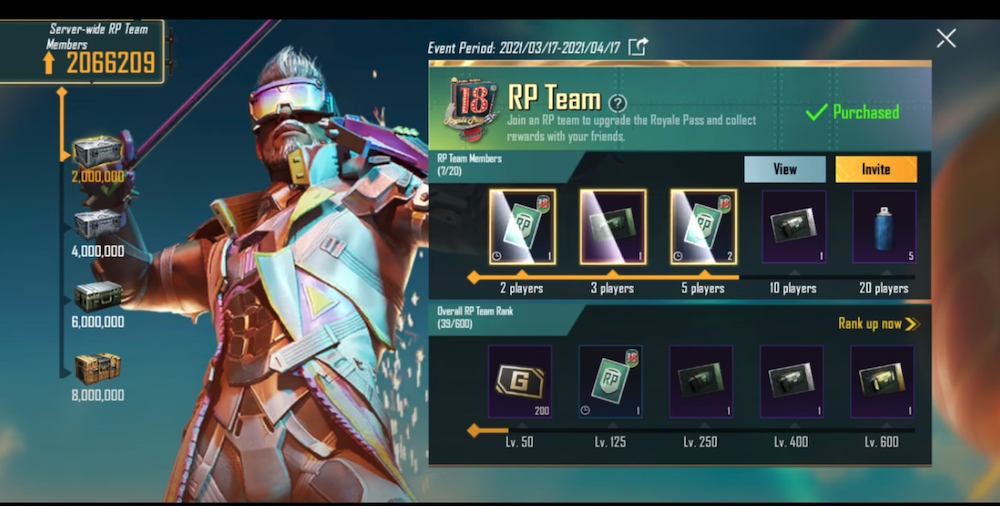
When you have purchased the season’s Battle Pass, players can form or join an RP Team. It gives rewards for every team member based on 1) the number of players in the team and 2) the Battle Pass rank of all the players in the Team summed up together. This adds “social pressure” to carry your own weight so everybody can reach the best rewards.
Conclusion
As we can see, PUBG’s Battle Pass has become quite a monster compared to the simple, early days of the game. It is an excellent example of how you can push Battle Pass in various directions. But it is just one single example of the Battle Pass evolution and innovation in the market. There are a bunch of interesting twists made to the basic format. To name a few:
- Difficulty-based BPs where players can choose which BP to purchase to get the best value for their own player profile
- Subscription elements tied to BP purchases
- Guild-based BPs
If you want to hear more about these implementations, PUBG or Battle Passes in general, feel free to send me a message anywhere or hop into the GameRefinery service! We have tons of data and implementation examples from Battle Passes and over +250 other features as well, so log in to the service to find out tons of interesting insights!
If you enjoyed reading this post, here are a few more you should definitely check out:

